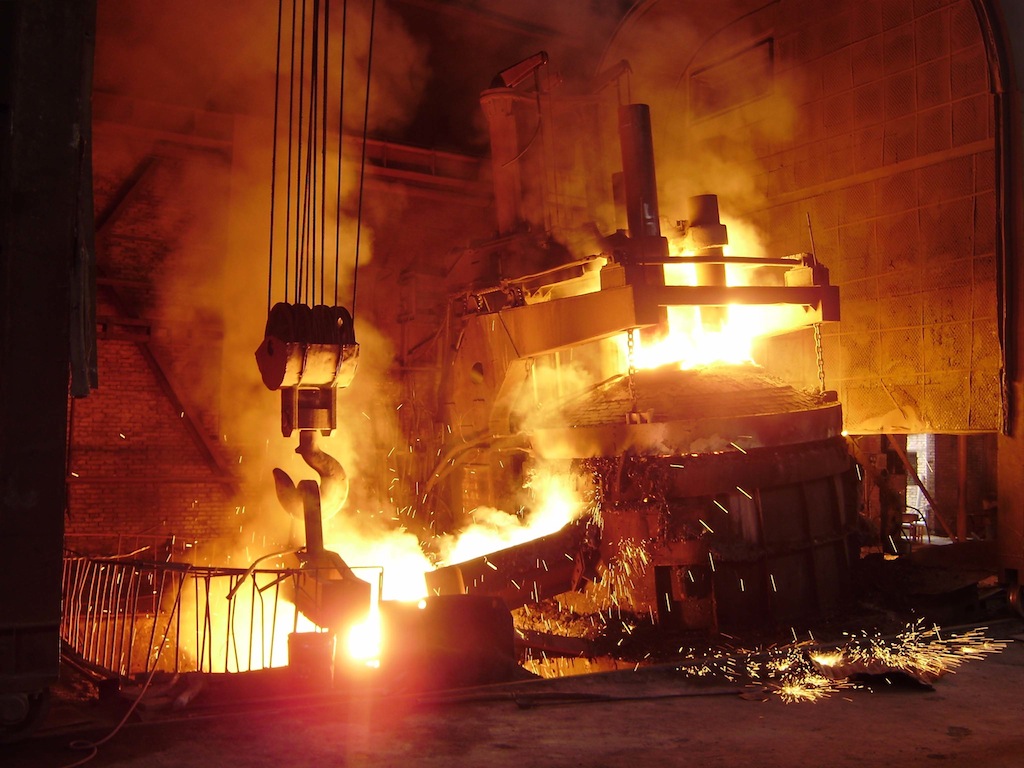On the second and final day of the 5th Iranian Steel Market Conference (ISMC 2015) in Tehran, foreign companies held a number of workshops to introduce their services and products to the managers and engineers of Iranian steel and mining companies.
The Spanish Sarralle company, a global giant in manufacturing steel machinery, was a major sponsor for the event. The international group held an educational workshop to introduce its latest services to a group of steel sector managers. Sarralle has also established a joint company with Iran to produce parts and equipment for Iranian steelmakers.
“With so many new steel plants coming up in Iran, one could assume that Iran’s steel sector is the fastest growing market in MENA [the Middle East and North Africa region] countries”, Eneko Sedano, a project manager at Sarralle told the Financial Tribune on the second day of the ISMC 2015.
Iran’s steel production steadily increased from 2007 to 2013, growing by 35% during this period. The growth is driven by increases in Middle-East production which indicated a 59% growth in 2013 compared with 2007. This is while North Africa’s figures dropped by 8% during this period. Iran is a dominant player in the Middle East and accounts for most of the growth in the region’s steel production.
“Despite vast potential, the steel industry has not yet reached the position it deserves, with the main obstacle being the financial restraints caused by western sanctions against Iran,” Sedano added.
Inaki Escos Oyarzabal, another top manager at Sarralle Group believes President Hassan Rouhani’s policies have helped open up Iran’s market to global businesses and attract foreign investors to study the business opportunities available in the country, expressing hope that “investors will flood Iran’s markets once the sanctions are lifted.”
The Spanish officials’ remarks were echoed by Italian industrial groups such as Maina Company whose export sales manager, Andrea Civera said: “Iran’s steel market is constantly growing, making it the most alluring market among Middle-Eastern and East European countries.” Maina and a few other Italian enterprises are present in Iran’s steel market since the 1970s.
Noting that Iran has not yet reached its objectives in terms of steel production capacity, Civera mentioned Saudi Arabia, Iraq, Oman, the United Arab Emirates, and Libya as other growing steel markets in the Middle East but pointed that Iran “has an edge over these countries due to its abundance of iron ore reserves and energy sources.”
The foreign companies interested in investing in Iran’s mining and steel sectors are not limited to machinery and equipment manufacturers. The Swedish Kiruna Wagon Company which specializes in ore wagons and mine transportation systems is also seeking opportunities for iron ore transportation in Iran, the company’s managing director, Fredrik Kangas told the Financial Tribune.
Really Surprised
According to Kangas, his company dominates the Scandinavian market, and is also active in other countries such as Canada, Chile, and Australia. Noting that they had never thought of Iran as their primary market, Kangas said: “We were really surprised when we attended this conference [ISMC 2015]. The Iranian iron ore market is much bigger than what we expected.”
“You have what you need. You have well-educated people, you have inexpensive energy, and you have high-quality iron ore. These are good opportunities than can help you become a big steel producer”, said Kangas. However, he emphasized that the last piece of the jigsaw puzzle is the management which should be taken care of. He urged the officials to set long-term goals of at least 5 to 10 years, stick to the plans, and be patient.
“Politicians have a lot to do such as providing infrastructure, increasing social welfare, and improving the education system; so they had better leave the other issues to the private sector and let them take care of the decisions in the industrial sectors,” Kangas told the Financial Tribune, calling supervision and control as the main tasks of the governments in countries like Australia and Canada which set their clear goals in the mining sector a long time ago.
Role of Railroads
A basic infrastructure in the mining sector in any country is the transportation and railway is obviously the most efficient way to transport heavy products such as steel or iron ore. Experts believe if Iran can modernize its iron ore transportation systems, it will be able to increase the efficiency in the sector ten times the current level.
The foreign guests attending the ISMC 2015 unanimously believed that through a national development plan in the steel sector and adopting modern management systems, Iran can easily pursue the plan China implemented some twenty years ago in 1996 when they only produced around 100 million metric tons of crude steel per year. Now they are producing over 830 million tons. According to global market analysts in the steel sector, management is key to success for Iran which, according to what they say, could be titled as the dark horse in global steel industry.
The 5th Iranian Steel Market Conference (ISMC 2015) opened in Tehran on Tuesday. The conference was aimed at studying the opportunities and challenges in the steel production chain from iron ore exploration and extraction to yielding the final crude steel and steel products.
The conference, one of the most prominent steel industry conferences in Iran, was organized by the Persian economic daily Donya-e-Eqtesad with support from the ministry of industry, mine, and trade; the Iranian Mines and Mining Industries Development and Renovation Organization (IMIDRO); and giant global steel industry players.


